Top Games Lists
Rusty’s Top 10 Games of 2022!
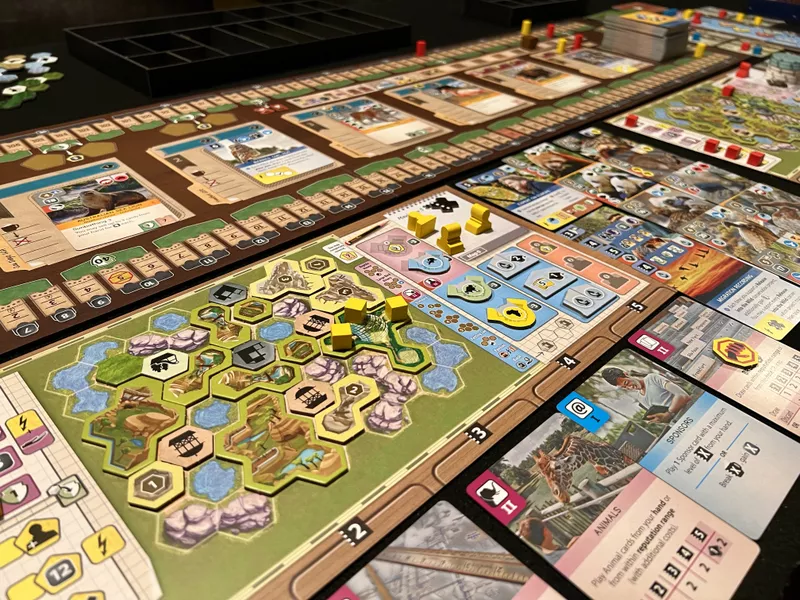
A year ago I did a Top 10 boardgames list. I have played a bunch of new games in the last year for many reasons, including my gig as a Game Guru at The Odd Spot in Spencerville, ON.
I used PubMeeple to come up with a list based on my BGG ‘have played’ games. They use A/B options to come up with a ranking. That is fun for me as I don’t even know what it is going to be until I am done.
In the Top 10 there are six games that I hadn’t played a year earlier. That means some games that I very much enjoy, like Azul or T.I.M.E. Stories, got pushed out.
#1 – Ark Nova
My Top 2 games could alternate based on the day, but I am going to agree with Andi here and plug Ark Nova.
In Ark Nova you are running a zoo, in the modern sense of the world where things like conservation matter. This game has Resource Management, Card Management, Polyomino Placement, Upgrades, Tracks, and the big selling point from Wingspan moved to a more complex game, every animal card is unique. I was sold on this after only one game. It does a lot of what Terraforming Mars does, but in a more pleasing package. It has a scoring system that is so unique that it is hard to explain until you have actually played it. There is one victory condition yet many paths to get there.
I am a big Ark Nova fan, obviously. Great, great game.
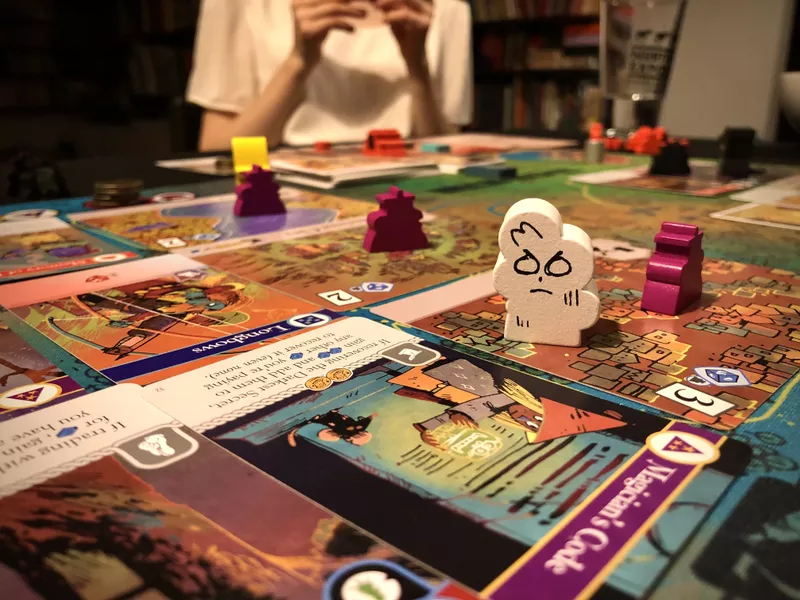
#2 – Oath: Chronicles of Empire and Exile
Oath is what I like to call a ‘Lifestyle Game’. It isn’t a a campaign game or a Legacy game but it IS a game that if you just play it once, you aren’t getting the full effect of what this game can be.
Mechanically it is a very interesting take on Resource management, Cards (but not Hand Management), Area Control, and Combat. It is somewhat asymmetric, as one player is playing by different rules than the rest, though who that player is will change from game to game. There are multiple ways to win, which will also be different game to game. There are cards and locations, which will also be different… you get the idea.
The thing that makes this different than other games with that sort of variability is that it isn’t fully random. The changes to each game are made based on what happened in the previous game.
In addition, you are encouraged to log your results in the form of a journal. I will copy a journal page from our game (from when I was Chancellor – the ruler).
““““““““““““““““`
From the official Journals of Lord Allfred Stromkirk, First of his line, and Holiest Ambassador of the Gods of Tooth and Fang.
The lands sit in peace and prosperity, but this was not always so.
From our Sacred Manse, on the Plains of Avon, we ruled over these lands with the right of all that we believe, yet we did it with kindness and strength.
There were threats to our orderly rule, however.
Tariq of the House Korn, once a Colonel in our own Holy Armies, dared take up arms against our righteous rule. Korn even gained ground, and might have been able to hold power over the realm if it were not for the combined forces of our Bowmen, not to mention our great Navy, which was able to attack on an otherwise unprotected flank in the Hinterlands.
Korn’s forces were mighty, but the Might of the Gods was on our side.
Korn was not the only threat to our rule, however, just the most overt one.
Bertrand Locksley, while claiming to speak for the people of the Oathlands, tried to gather riches and arcane artifacts to sway the people to their side, but it was not to be. However much Locksley tried to wrap symbols around him, the people were ultimately unswayed from the True Path.
If Locksley tried to corrupt the people in the light, there was another, Étoile Reynard, who tried to work from the shadows. He tried to manipulate the other Great Houses into campaigning against us on their behalf. How could they work together when they were not working for the betterment of the Realm?
Who held the lands? Who held the favour of the people? Who controlled the very beasts that others would overlook? Who kept those dark secrets that could threaten the lands?
House Stromkirk, now and forevermore.
“““““““““““““““““
Yeah. This game is amazing.
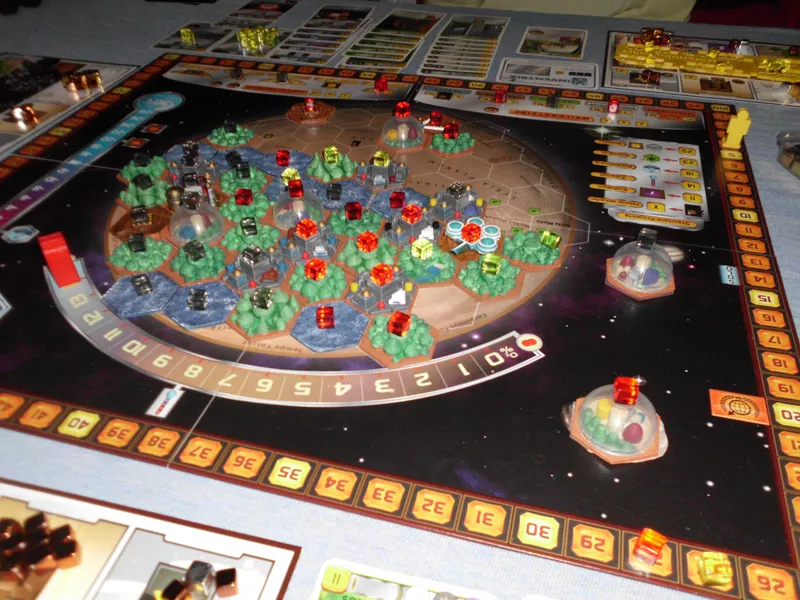
#3 – Terraforming Mars
One year ago, Terraforming Mars was my #1 game, barely beating out the Imperium twins (see below). It is down to 3rd, not because I no longer like it as much, but rather because I played two new games that have stolen my gaming heart. (See above.)
Terraforming Mars is all about Resource and Card management. One could argue that it has Semi-Cooperative elements (despite those normally being red flag words), but it isn’t really that sort of game.
In Terraforming Mars you take on the role of a corporation trying to make Mars habitable. The semi-co-op element is that all the players need to increase the oxygen levels, increase the temperature, and introduce oceans for the project to succeed. Meanwhile you are trying to increase your income to be the most successful terraformer.
Some don’t like the look of the game, but I have no problems with it. I also have never played any of the expansions, but I just enjoy a competitive game that isn’t about trying to kill your opponent (though I play plenty of those).
I got to host this at The Odd Spot recently and we had such a good time that a couple that were playing it bought a copy to take home. That is a pretty good sign of a good game night.
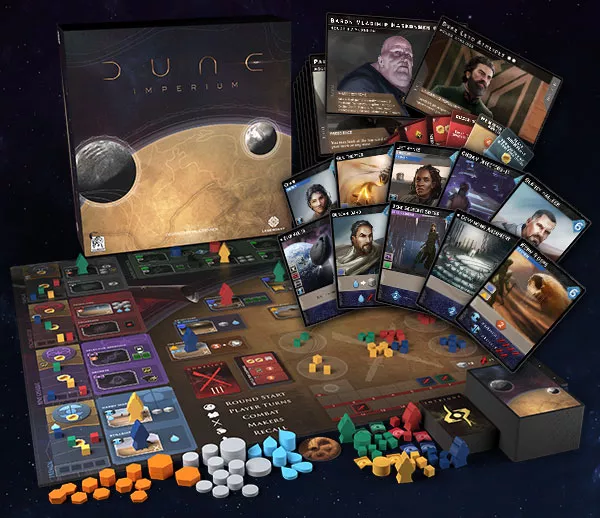
#4 – Dune: Imperium
Dune: Imperium slipped one spot from #3 last year to #4 this year.
This game is a mechanic lovers dream. It has Worker Placement. It has Deck Building. It has Hand Management. It has Track Advancement. It has Variable Player Powers. It has Combat.
In addition, if you are fan if Dune, it has a great theme. This was one of the hottest games released a couple of years back and to me, it holds up. It is very different from the classic game of Dune (which is also quite good, but I prefer this one).
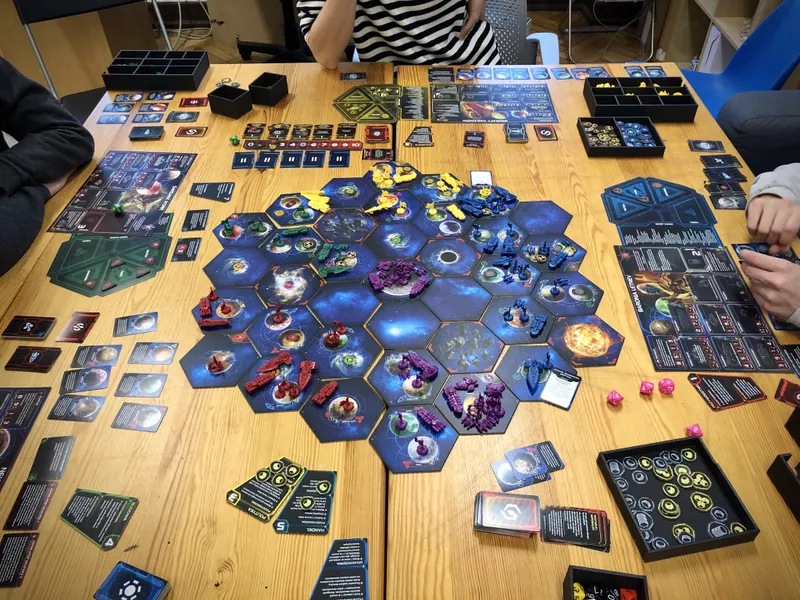
#5 – Twilight Imperium
My #5 game dropped from #2 last year. Twilight Imperium (4th edition), otherwise known as TI4 is a sprawling, exciting space game that involves Area Control, Resource Management, Combat, Variable Player Powers, Variable Goals… the whole works.
And when I said sprawling, I meant sprawling. It is a massive table hog, but all of the real estate is used well.
So why did it drop from #2? One of its big selling points is also one of its biggest weaknesses.
Recently I had someone refer to a game we were playing at The Odd Spot as ‘being quite long’, as it took us just under 3 hours, including the time it took me to teach four new players.
When we played TI4 with five players, it took 14 hours. It isn’t a game you just pick up, It is a game you plan a weekend around.
Despite that lengthy playtime, it feels like time well spent, but it makes it a lot harder to get to the table.
So, I recommend to anyone that you give it a try, but make sure you know what you are getting into.
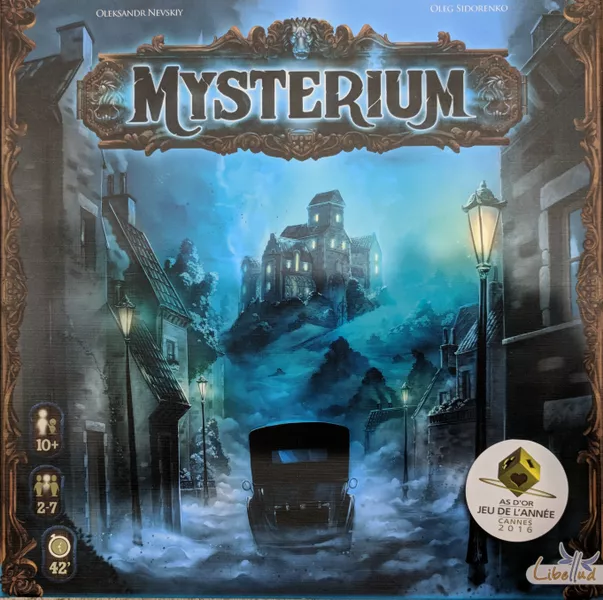
#6 – Mysterium
Some people may be familiar with Dixit. It was one of the ‘hot’ games some years back and involved guessing which card – each of which was a piece of art – stood for a particular word of phrase. The makers of Dixit made a great mechanic and called it a game.
That doesn’t mean Dixit can’t be fun, but more as a party game then a good, nuts and bolts game. (Think Cards Against Humanity without the… unsavoury aspects, and with a focus on pictures instead of words.)
This is also kind of like Dominion. They made a new mechanic and called it game while others have taken that mechanic and integrated it into better games.
Speaking of which, there is a better version of Dixit, made by the makers of Dixit. It is called Stella.
But MY favourite implementation of the mechanic is Mysterium. Most of the players are psychic mediums trying to uncover the details of a murder, with clues given to them by the ghost of the victim. It is Dixit crossed with Clue (right down to having to determine the murderer, the location, and the weapon).
Through working at The Odd Spot and with my friends, I have only ever been the ghost… but I really like being the ghost.
The other players seemed to have as much fun as I did, though.
As with all games, there are things that I might change. The fact that you can’t get to the second part of the game off everyone doesn’t succeed at the first part (it is a co-operative game), can take some of the fun away. I found that the voting mechanism (that tells you how many clues each player gets in the final round), is pretty easy and every ends with three clues, so I instituted that anyone who doesn’t make it to the last round loses their clues and only gets the minimum one. That way we can still play that last part if that is how it goes.
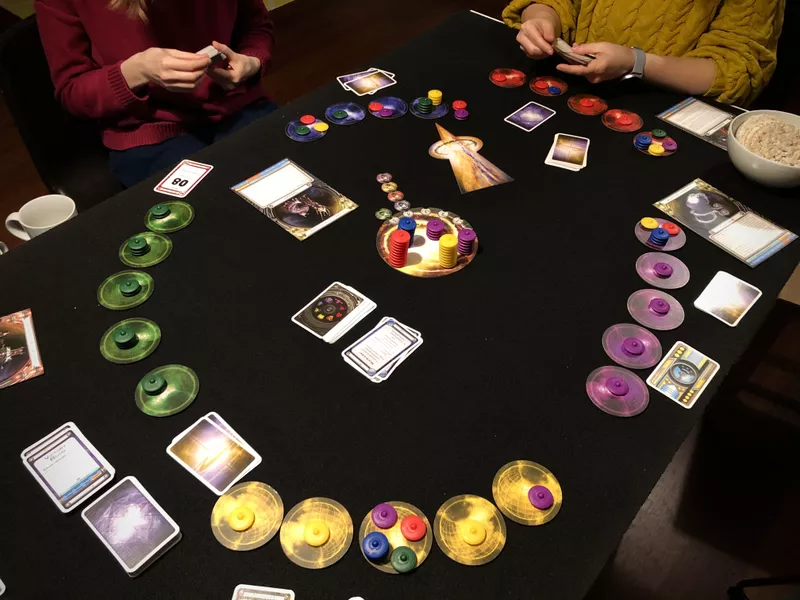
#7 – Cosmic Encounter
This is pretty stable from last year, when it was my #6.
Cosmic Encounter is a pretty simple game, at its heart. Usually you don’t even get to decide which other player you are choosing to attack (though you have lots of choices when it comes to alliances). The thing that makes it stand out are the Variable Player Powers. Each player takes on the role of an alien race, and each race is very different. Some are powerful and some are just weird but they all change the rules of the game for that player. On top of that there are A LOT of races, so there is a lot of variability on the game.
Variability is one of the things I look for in a game and is why things like Smash Up and Legendary generally rate high for me (though, spoiler, they both fell out of my Top 10 this year).
There are some downsides, like the fact that you really need a good sized group of people to play. I couldn’t imagine it with less than five and I would prefer six or seven.
Also, there is always a chance for a really anti-climactic ending if players let it happen. For example, I played one game with six of us and we could have ended with a five-way tie for the winner. Thankfully the players kind of agreed to avoid that.
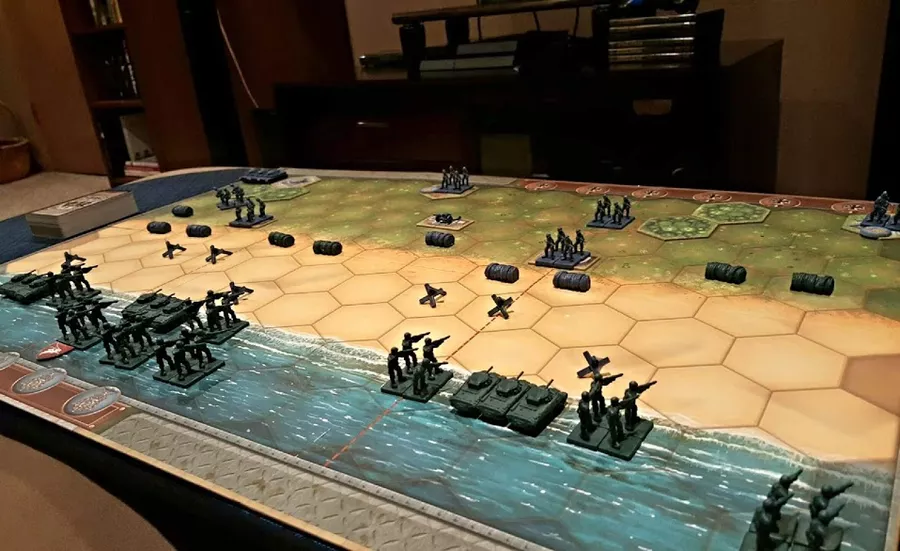
#8 – Memoir ’44
My #8 is new to me… I mean REALLY new to me. I first played it in December. Also, to be fair, I have no idea if it will stay this high because I won’t have a lot of chances to play it (as it is a two player game and I mostly play with four). There is a definite recency bias as well.
All that aside, I quite enjoyed playing this! It is KIND OF a war-game but not really. It looks like a war game but it is card driven, which will become frustrating for ‘true’ war-gamers. It is scenario based and has TONS of expansions and… yeah. Fun game. I look forward to playing it again.
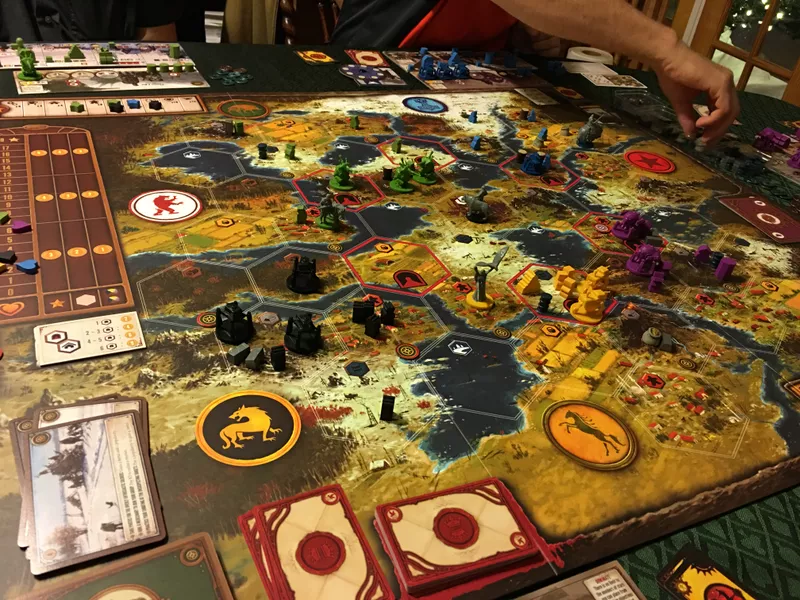
#9 – Scythe
Earlier in the year this game would have slotted higher. It is great combination of Resource Management and Action Selection, along with a solid Combat System (similar to the original Dune).
The funny thing is that is ‘only’ slots here because we got so much enjoyment out of it. We played the Fenris campaign, which added a lot to the game, but A: it might have burned me out on it a little, and B: it did great things to the early turns of the game and it makes those early turns feel a little stale when not playing the campaign.
That criticism aside, this is still a really good game, and right up my alley.
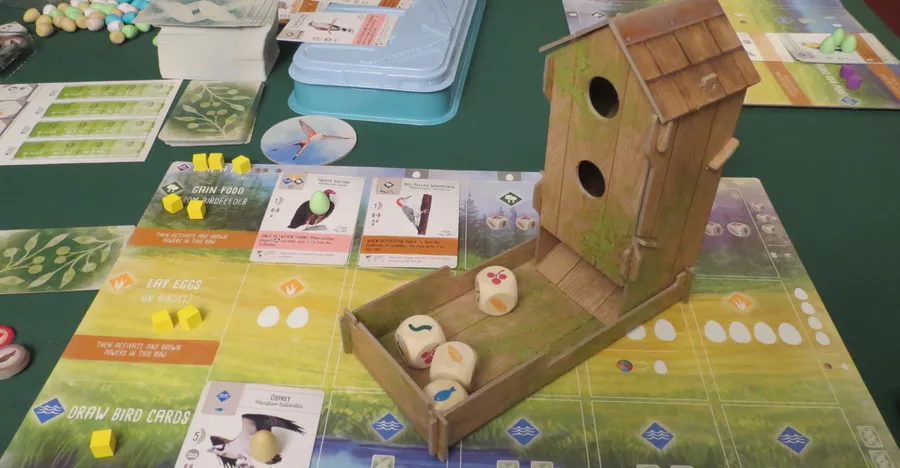
#10 – Wingspan
This was actually the first game I played AFTER doing my list last year, so it feels like I have known it for a while. It is lighter than my usual faves, but it has a really nice combination of Engine Building and Action Selection, combined with mitigated randomness. In my view, a game like Wingspan should take the place of Catan as an entry point for new gamers.


